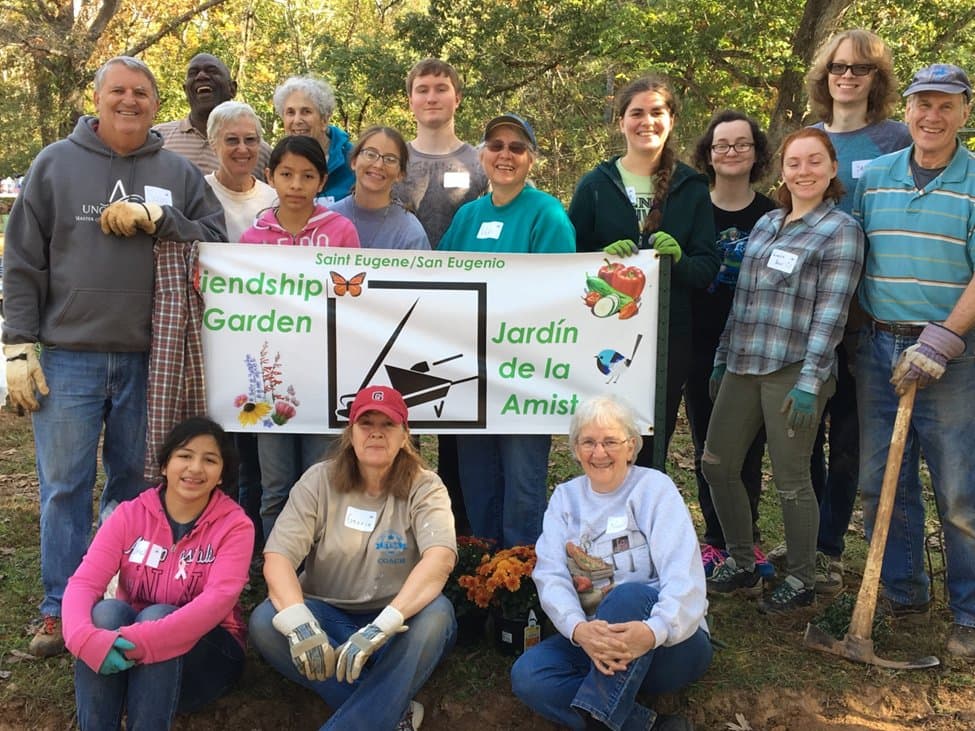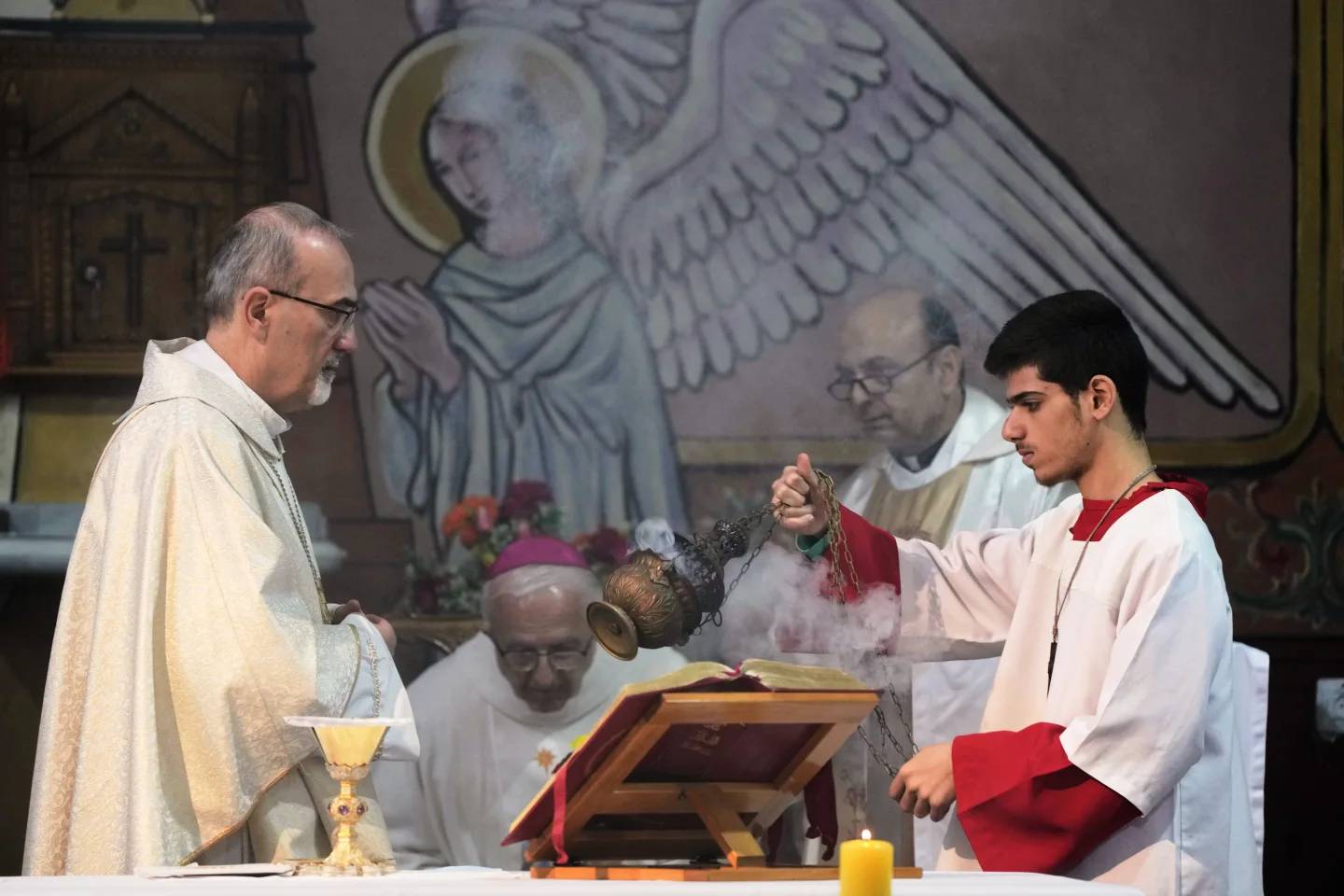CLEVELAND — It was when Sarah George was working at the former Glenmary Farm in northern Kentucky that she fell in love with Appalachia.
Her first visit came in college on a fall break service trip in 2011. After college graduation and a year working in the vocations secretariat at the U.S. Conference of Catholic Bishops, she returned to the farm as a volunteer manager with AmeriCorps, the national service program.
George’s time in the gently rolling hills near Vanceburg nurtured a growing desire to work with the land and the people of the region. She found that the people rooted their lives in faith, family and respect for the land and she didn’t want to give that up.
“There’s consistency in holding these values,” the Mount St. Mary’s University graduate said.
Today, George is executive director of Emmaus Farm, which she helped establish on the property in 2015 after Glenmary Home Missioners decided to close it. Students and volunteers continue to trek to the farm to immerse themselves, even for a short time, in the life of the region.
George’s enthusiasm for Appalachia led to her becoming vice chair of the board of the Catholic Committee of Appalachia, which is observing its 50th anniversary this year.
Her commitment to the people and the land illustrates the principles that led to the CCA’s founding in 1970. Encompassing a network of people, churches, social service agencies and grassroots organizations, the CCA continues to advocate for, stand with and minister alongside the residents of Appalachia, a region that extends across 13 states from Mississippi to New York.
“The people in the local areas are who we have to most to learn from,” Michael Iafrate, CCA co-coordinator, told Catholic News Service.
The committee’s work has always been one of collaboration with local communities to address poverty, unemployment, environmental exploitation, substance abuse, the lack of access to health care and the low quality of education that keeps people mired in uncertainty.
More recently, Iafrate explained, it has focused on giving voice to people who have not always been heard across the mainstream culture including racial minorities, recently arrived immigrants, young people such as George and LGBTQ people.
“CCA has always exhibited new ways of being in ministry and having different sectors of the church in relationship with each other in new ways, a different way of being church,” Iafrate said.
The CCA emerged from the Commission on Religion in Appalachia, which was established in 1965 to look at ways to minister with people facing generations-long assaults on human dignity. By 1970, a kind of Catholic caucus existed within the commission.
Sister Beth Davies, a member of the Sisters of the Congregation of Notre Dame, arrived in southwestern Virginia from her native New York in 1972. She recalled that Catholics were “a very, very small group” within the commission.
She said she quickly learned through her connection with the CCA the importance of hearing from people about their concerns and daily struggles. She traveled north and south to talk with others — an important factor considering that Catholics are a small minority in much of the region and are often viewed skeptically.
“That’s how we got to know people, just sitting and listening. They told us what they were doing and what they were about,” said Sister Davies, 87, coordinator of the Addiction Education Center in Pennington Gap, Virginia. “Most were involved in some way in trying to empower other people. Not Catholics, they were just local people who were interested in justice seeking.”
From the conversations, the ministries emerged.
“The important thing was the people become your teacher. Once you realize who your teachers are, they’re the best teachers in the world because they’re living it,” Sister Davies said.
Glenmary Father Les Schmidt often traveled with Sister Davies and others connected to the CCA. He said when he arrived in southwestern Virginia in the 1960s, it was the women religious “who wanted to make sure (ministry) wasn’t top down.”
“It was everybody. It was mutual, that we’re all the body of Christ,” he said.
Now 86, Schmidt maintains close ties with the committee and follows its example of service to others. “I never come as a leader. I always come in at the invitation of the local community,” he said.
The long-ago meetings pointed to the need for collaborative ministry. For example, if people were hungry, food was collected and distributed and efforts were made to address the reason for hunger. When opioids arrived in the 1990s, plans were developed to get people into treatment and to stem the flow of illegal drugs from doctors or other sources.
Carol Warren, 70, is a 10th-generation West Virginian who traces her family’s arrival to the 1750s when the state was still part of Virginia. Although she moved to California in 2015 to be with her family, she continues her long affiliation with the CCA that started when she worked in parish and diocesan social ministry more than 30 years ago.
She said she was attracted to the CCA when she was doing pastoral work in eastern Kentucky because of its cooperative ministry style.
“It was the people who really wanted to live Gospel values and empower people and just being with (them) — accompaniment — to be the focus,” Warren said. “It attracted really collaborative people because we all knew we had to work together if we wanted to accomplish anything. It attracted people who knew we had to work with people of other faiths. I think it’s still attracting the same kind of people.”
The model that emerged also led to the development of a series of pastoral letters from the committee at 20-year intervals.
In 1975, the bishops of Appalachia promulgated “This Land Is Home to Me: A Pastoral Letter on the Powerlessness in Appalachia.” It was followed in 1995 by “At Home in the Web of Life: A Pastoral Message on Sustainable Communities in Appalachia.” Both challenged local communities and wider society to address misperceptions about the region and tackle the indignities people face.
In 2015, the committee took a different approach in issuing its latest letter, “The Telling Takes Us Home: Taking Our Place in the Stories That Shape Us.” Calling it “the people’s pastoral,” the committee bypassed the institutional church and gave everyday people the opportunity to share stories from their personal journeys to overcome deeply entrenched social injustices, becoming the teachers themselves.
The first two pastoral letters impressed Bishop John E. Stowe of Lexington, Kentucky, leading him to connect with the committee not long after he was named bishop in 2015. He said he “marveled” at the accessible and understandable teaching message embodied in the documents and wanted to learn more about the organization.
He became CCA’s episcopal adviser and welcomed the work already underway for the most recent letter.
Stowe credited the committee for addressing ministry from deeply theological roots to bring the Gospel to people, Catholic or not. He said the committee offers an “emerging model of church” in a post-pandemic world because it follows Pope Francis’ vision for a church that accompanies people.
“CCA has been intentionally ecumenical,” he told CNS. “Some members are not active in the church, but are familiar with the church’s teaching. That’s an important piece.”
In addition, the bishop said, the advocacy role for Appalachia the CCA has undertaken for five decades is important for the church to understand even when parties may disagree. It is vital to keep the conversation from breaking down, he said.
Going forward, Iafrate said, the CCA’s work will focus on giving voice to wider communities, opening the way for a new generation of leadership and ministry to illustrate the diversity of people across Appalachia.
He said it will be especially important to “open our ears and hearts to people of color and the history of race in Appalachia.” The committee has established a task force to look at issues related to race.
Other voices will be just as important to hear, he added.
“We’re getting an understanding that the voices that are the most important are the ones that challenge the ways we’ve understood this region in the past.”














